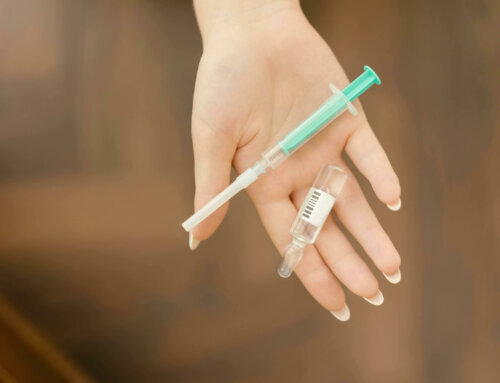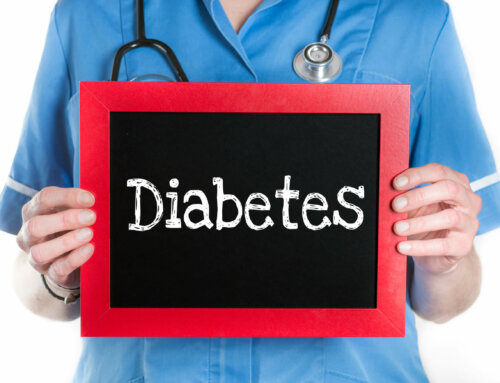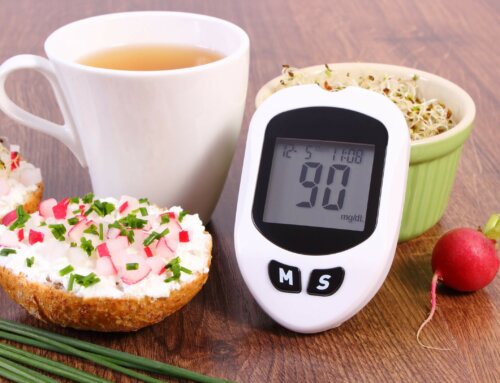Diabetes in older adults is distinct from diabetes in younger people and the “approach of medical and lifestyle treatment should be different.” As we age, the prevalence of diabetes and frailty jumps worldwide. Frailty increases your risk of infection, falls and disabilities, while also doubling the risk of surgical complications and lengthening your hospital stays.
Frailty in aging is not inevitable. It does not have to happen. With better medical interventions and lifestyle changes, it can be avoided. In 2029, the predicted amount of people aged 65 and older will be 25% of the world. By 2064, this number jumps to 38.7%. This could create a major challenge to the rest of the worlds’ population.
Awareness of the connection between “diabetes and frailty” is needed to handle the future forecasted high numbers and its effect on the world. “Global frailty prevalence in 2022 was estimated up 24%, in those age 50 years or older. In 2035, 55% of 592 million of the world’s population will have diabetes. 35% of all cases will be in those between 60-79 years old. When you have diabetes at 65 years of age or older. You are 3-5 times more likely to also be considered frail.”
7-12% of Americans 65 and older are considered frail. These two conditions (diabetes and frailty) in combination will have a detrimental effect on US health care costs and health care services for years. It will affect those who experience it first-hand, the actual patients, and those who are ultimately responsible for these patients, family and health care providers.
Pre-frailty is a recognized and potentially reversible condition when addressed. Pre-diabetes is also considered reversible if dealt with immediately.
What is frailty?
“Frailty is a dynamic state of reduced physiological capabilities that raises vulnerability to adverse health outcomes including death.”
In simple terms, common signs of frailty include:
- You are shrinking and you can lose from 1-3 inches in height
- If you lose your appetite or desire to eat
- If you have lost 10 pounds in the last year
- You feel weak, even standing for short periods of time becomes an effort
- Your grip strength disappears
- You feel exhausted, even the smallest movement exhausts you
- You walk slowly, taking 7 seconds or longer to walk 15 feet
A more formal description of frailty includes:
- A decrease in your ability to respond to words or actions
- Less ability to adapt to activity
- Less ability to change and be flexible
- Less ability to adapt to an injury
- Reduced muscle strength
- Reduced muscle mass
- Being highly vulnerable to any stressors, either physical or emotional
Frailty affects multiple systems in your body including the brain and nervous system, the endocrine system (diabetes), the immune system, the muscle/skeletal system, the respiratory system, the cardiovascular system and the renal/kidney system.
Older people, age 65 and beyond, with diabetes are more at risk for frailty because of either experiencing low blood sugars (hypoglycemia) or high blood sugars (hyperglycemia).
Both chronic hypoglycemia and hyperglycemia can lead to multiple serious health problems including:
- Memory impairment
- More falls, sprains, twists and fractures
- Cardiac events
All leading to more injuries and more frailty. It continues round and round, with more negative consequences unless this pattern is broken.
Frailty Syndrome
This gives a deeper explanation and explains why it can be such a serious condition. The “frailty syndrome” includes:
- Sarcopenia – A fancy name for loss of muscle mass and a gain of visceral fat. We all lose muscle mass due to “change in muscle fibers and lack of hormones as we age.” Visceral fat is “hidden fat that wraps around your abdominal organs.” It is deeper than fat that lies just under your skin called subcutaneous fat. Visceral fat is dangerous. It is active fat that causes inflammation and narrowing of your blood vessels. It raises the risk of diabetes, heart disease, high blood pressure, high cholesterol and Alzheimer’s disease. Most people have an average of “10% visceral fat and 90% subcutaneous fat.” Visceral fat increases when you “drink sweet and artificially sweetened beverages, ready to eat processed and ultra-processed foods, bagged and boxed foods, sweetened yogurt and dairy-based desserts.”
- Reduced strength – the inability to carry routine objects like groceries or packages. Inability to open or close windows or push a vacuum cleaner.
- Decline in cognition – inability to think, reason, rationalize, concentrate and remember
- Loss of stamina
- Loss of power
- Loss of balance
- Become a high fall risk
- Unintended weight loss
- Low grip strength
- Worsening general fitness
- Decreased aerobic capacity – more shortness of breath
- Self-reported exhaustion, extreme fatigue
- Slower walking speed
- Loss of ability to perform basic activities of daily life
- Decreased quality of life
- High risk of hospitalization
- Higher risk of death
These factors in the “frailty syndrome” make it more difficult or nearly impossible to maintain independent living. Frailty puts you in a vulnerable situation even when you are exposed to only low-level stressors. Once you reach age 70, “frailty should be evaluated in all patients with diabetes.” If you are already normal to thin after age 70, then additional weight loss in aging can be dangerous and lead to increased frailty.
Which formal tests should be utilized by health care providers when you turn age 70 to evaluate frailty when you have diabetes?
A Comprehensive Geriatric Assessment (CGA) or written assessment should be used to assess your current abilities. It should be conducted by a multi-discipline team including a physician, nurse, dietitian, social worker, physical therapist and occupational therapist.
Multiple studies have been done suggesting that “when these skills are tested and then given a working plan for older patients, there are significant benefits in future independent living and reduced mortality.” Sometimes these assessments are performed at an in-patient geriatric unit in a hospital and other times they are performed in an out-patient setting or physician’s office.
These assessments are usually written questionnaires along with performing specific tasks such as: buttoning and unbuttoning a shirt, using a pen, drawing a clock with a specific time, remembering a word sequence after performing another task, writing a full sentence and getting up and down from an exam table and a chair without arm support.
Assessments that are generally included and suggested by your health care provider for the evaluation include:
- Katz Index of Independence in Activities of Daily Living
- Lawton Instrumental Activities of Daily Living Scale
- Disability – Basic Activities of Daily Living/Instrumental Activities of Daily Living
- Mini-Cognitive Assessment Instrument
- Mental Health Assessment – Depression/anxiety /dementia. Even just depression and anxiety can lead to reduced brain activity and power
- Cognitive and Emotional mini mental state exam – Yesavage Geriatric Depression scale
- Geriatric physical exam
- History to identify risk factors
- Pain assessment & pain thresholds
- Risk of low blood sugar or hypoglycemia
- Risk of high blood sugar or hyperglycemia
- Electronic Preventive Service Selector
- Falls Prevention in older adults
- Nutrition Assessment- nutritional screening tools
- Incontinence Assessment – both bladder and bowel control
- Vision and Hearing Assessment – handicap inventory
- Osteoporosis Assessment – loss of bone density
- Review of vitamins, minerals, herbal supplements, other OTC medications and all prescription medications you are currently taking
- Immunization status
- Gait or walking speed
- Assistance with long-term care and optimal living placement if needed
Having frailty makes it that much more difficult to manage and control your diabetes. After the initial assessment your frailty will be graded as: very fit, well, managing well, vulnerable, mildly frail, severely frail, very severely frail or terminally ill. Your health care provider should review your results with you, along with a family member or friend, and then recommend an “individualized treatment plan.”
This treatment plan should include:
- A nutritional program
- An exercise plan including strength, aerobics and balance exercises
- Diabetes self-care education program
- Medication explanation and plan including all supplements
- Activities of daily living plan
- Mental health suggestion plan
- Increased brain power plan
- Guidance on how to accomplish this with a proper support system in place, especially if you live alone
Frailty is diminished strength, endurance and physical function. It makes anything and everything more difficult to accomplish. Women tend to be more frail compared to men as they age. There are several common disease processes that are associated with the development of frailty. They include heart failure, cancer, kidney disease or kidney failure, HIV infection and diabetes. “Diabetes accelerates the aging process, a greater risk of being frail, more complications and greater deterioration, more quickly.”
What A1C level should a patient over 70 with diabetes try to maintain?
This is an individualized number decided between you and your physician depending on your specific health and physical condition. Most frequently if your health “physical and cognitive are stable then your A1C at age 70 or older should remain around 7-7.5%.” If frailty is added to your score it should stay at 8-8.5%.”
Some people have had diabetes for years and have significant complications like nerve damage, kidney problems, heart issues and visual problems, besides frailty. Some people are newly diagnosed in old age or have had it for years without a diagnosis. Tight blood sugar control with frailty is not recommended, neither is tight blood pressure control.
“If you have mild to moderate frailty, blood pressure should remain around 140/90 and if you have severe frailty, it should be about 150/90. Accident risks increase for the elderly with diabetes who maintain tight blood sugar control and tight blood pressure control.” If needed, frailty and aging care should focus on symptom relief and comfort.
What reasonable suggestions can be implemented to help limit frailty in older people with diabetes?
The goal is to “preserve the capabilities of the patient to self-manage themselves for as long as possible in a safe manner.” Without specific changes, they may require assisted living, rehabilitation settings and eventually followed by a nursing home setting or totally supervised living at home.
Nutrition. A study published in the Journal of Clinical Nutrition and done at the Harvard Chan School of Public Health states, “over 15,000 cases of frailty in the aged reported are linked to diet.” After a full nutritional evaluation, a plan to correct malnutrition, unwanted weight loss, obesity, dangerously high or low blood sugars by creating an individualized program should be instituted.
“High, lean, protein foods will maintain muscle mass and help regulate blood sugars.” Women require about 46 grams of protein daily and men require about 56 grams. Skinless chicken breasts, skinless white meat turkey, extra lean cuts of beef such as round steaks, round roasts, top loin and lean ground beef 90-95%, eggs, seafood, lean pork chops, tofu, and fatty fish are excellent protein choices.
Adequate high nutritional calories need to be eaten to prevent malnutrition including whole grains and low-fat dairy. Empty calories from processed foods and sweets, high fructose corn syrup, flavored yogurts with fruit on the bottom and sodas lead to increased problems with blood sugars and more frailty.
Fruits and vegetables eaten that are green, yellow, red, and purple, cuts down on frailty. Quercetin, which is a flavonoid found in different plants “aids in prevention of age-related disorders.” Quercetin reduces inflammation, insulin resistance and oxidation which all lead to aging and degenerative changes.
Fresh garlic fights systemic inflammation which occurs as we age. Beans, legumes and whole grains like oatmeal, brown rice, in moderate amounts can address this. Healthy fats like unsalted nuts, unsalted seeds, nut butters or spreads without added sugar and salt, avocados, avocado oil, olives and olive oil are all important sources of nutrients that can be consumed to maintain weight without raising blood sugars.
Limit saturated fats. Eat more fiber. Low-fat or full-fat dairy may be part of your diet to keep bones strong and maintain muscle mass. New research suggests “eating full-fat dairy as you age is helpful.” Calcium is needed for strong bones and helps you avoid osteoporosis (thinning of the bones) and can be found in both aging men and women.
Foods like almonds and kale should be included. Vitamin D should be measured and supplemented if numbers are below normal. It can be taken in a capsule or liquid form. Sunlight gives you vitamin D, but many people are deficient. Low vitamin D can influence your overall health.
Older people often are deficient in vitamin B12 and need to supplement. Vitamin B12 helps with improved blood pressure control and energy levels. Consider a supplement of vitamin B1 Thiamine which people with diabetes are often low in. It helps reduce diabetic neuropathy. Thiamine is found in pork, almonds, oranges, kale, asparagus and legumes.
Vitamin C is extremely important to help healing and protect cells as we age. Eat citrus fruits which are low in sugar. Avoid grapefruits if you take certain blood pressure or cholesterol pills. Watch out for dehydration which can be caused by out-of-control blood sugars or simply perspiration. You may not experience as much thirst as you did when you were younger.
Drink cool, calorie-free beverages throughout the day as much as possible. Men may require testosterone supplements depending on their present level. This should be discussed with your health care provider. Maintain moderate body weight. Being too thin or too heavy when you age can be dangerous.
Physical activity. Age related muscle mass loss is common but a walking program as well as a strength training plan are extremely helpful. Exercise also stimulates blood flow to the brain and “can lower your dementia risk.” Physical activity has been shown to be effective in delaying or even reversing frailty and improving your emotional well-being.
Swimming, pool aerobics or pool-walking is great if you have orthopedic problems. Resistance training, functional training, balance exercises, yoga and Tai Chi classes are all important components to prevent frailty and build balance. “One of the biggest risks in aging is falling.”
You can break down your fitness program into short periods of time but try to include something daily for both your body and brain. Easy exercises to include are ones that target upper, lower body and core strength.
Examples of these exercises include:
- Regular or wall push ups
- Side planks and regular planks
- Wall squats
- Bicycle kicks
- Lower bridge exercise
- Donkey kicks
- Practice getting up and down in your chair without using your arms
- Toe reaches
Do low intensity and high repetition weight training. Getting toned does not require a huge effort but it does require consistency. Do sets between TV shows, during a lunch break, while reading, at the start of your day or on the way to the bathroom. Just fit it in.
Balance exercises must be included since “fall risks increase with age and frailty.”
Diabetes self-care education. Knowledge is powerful and can head off frailty before it happens, especially with diabetes. Knowing how to treat hyperglycemia and hypoglycemia is critical. The more episodes of high and low blood sugars you experience, the more frail you will become as you age.
The effects are cumulative with each episode. Hyperglycemia leads to poor wound healing and several systemic long-term complications. Low blood sugars can be damaging to your memory and brain function.
Review all medications. Medication interactions are common in the elderly since they often take more than 6-8 medications. By keeping track of drugs and their interactions, more elderly people can suffer less. This includes prescription medications as well as any OTC meds. Talk to your pharmacist and ask for written printouts of drug interactions.
Social support system. Avoid loneliness, boredom, remain optimistic and keep your mind active and challenged. Learn something new. Stay involved and consider volunteering and working your brain. Be active in your community. Assist family and friends. “Helping activates pleasure hormones to be secreted called endorphins.” Learn a new language or musical instrument. Learn to knit, crochet or make glass jewelry.
Skin care. Keep skin moisturized since it does dry out quickly as we age. Try to get some fresh air and sunshine for 10-15 minutes daily if possible. Wear a wide-brimmed hat and sunglasses. Do wear sunscreen to avoid sunburn. Use tepid water since hot water dries out your skin.
Do not smoke. Reduce alcohol to one drink for women and 2 for men daily. Consider not drinking alcohol at all. Aged people do not metabolize alcohol easily. Many medications interact with alcohol.
Keep your yearly physical to track your progress. Your diabetes should be tracked with both a fasting blood sugar (FBS) and an A1C when you visit your physician. Monitor your blood sugars daily with a blood glucose meter or CGM (continuous glucose meter). Look for patterns.
“Frailty affects the management of diabetes in older patients.” Frailty in aging is even more pronounced when you have diabetes. The condition needs to be evaluated, tested, treated and managed with an individualized treatment plan. This will help prevent further and future problems and complications of both diabetes and aging.
Education is essential and will ultimately lower health care costs for you and our country. Telemedicine is an excellent option for glucose monitoring if you find it difficult to attend an office visit. You can use Facetime, Zoom or just chat. Knowledge makes you strong. Stay well!
References:
- https://www.hopkinsmedicine.org/health/wellness-and-prevention/stay-strong-four-ways-to-beat-the-frailty-risk
- https://www.webmd.com/diet/what-is-visceral-fat
- https://greatist.com/fitness/low-effort-big-gains-exercises
- https://www.medicinenet.com/healthy_aging_stay_youthful_avoid_these_mistakes/article.htm
- https://www.verywellhealth.com/average-weight-for-women-8603701
- https://www.thelancet.com/journals/lanhl/article/PIIS2666-7568(24)00136-3/fulltext
- https://www.healthline.com/health-news/healthy-ways-to-improve-longevity
- https://www.medicinenet.com/hypertension_surprises_that_raise_blood_pressure/article.htm
- https://www.hopkinsmedicine.org/health/conditions-and-diseases/diabetes/diabetes-what-you-need-to-know-as-you-age
- https://www.elsevier.es/en-revista-endocrinologia-diabetes-nutricion-english-ed–413
- https://www.pcdsociety.org/resources/details/new-advice-frailty-and-type-2-diabetes-management-great-start-year
- https://pmc.ncbi.nlm.nih.gov/articles/PMC10012063/
- https://guidelines.diabetes.ca/cpg/chapter37
- https://www.uptodate.com/contents/comprehensive-geriatric-assessment
- https://www.newsweek.com/common-snack-foods-frail-health-aging-1911849
- https://pmc.ncbi.nlm.nih.gov/articles/PMC4282277/







Leave A Comment